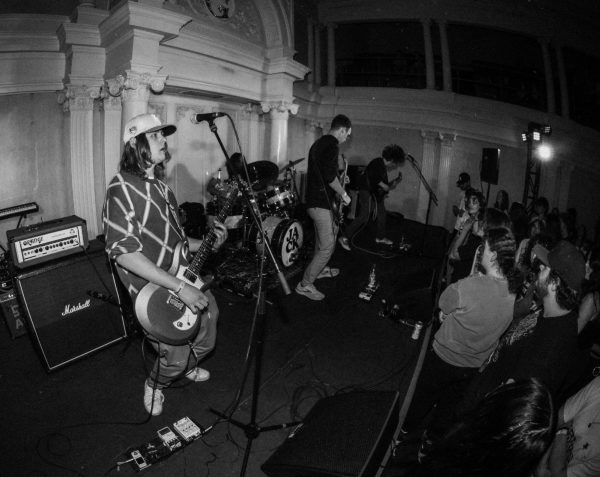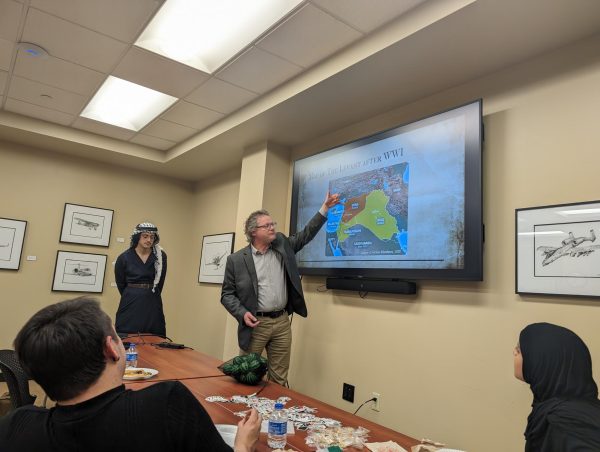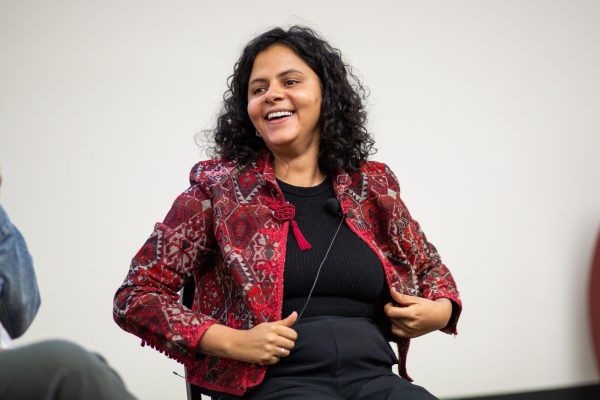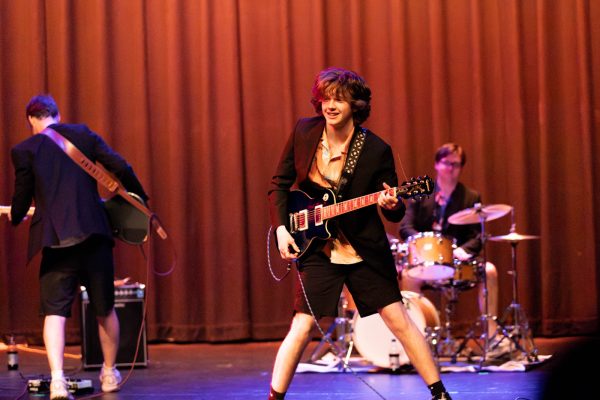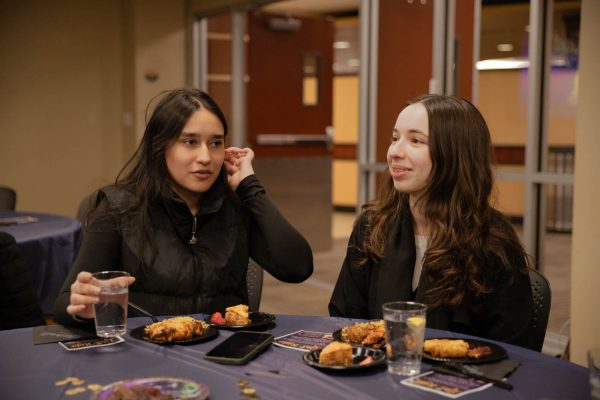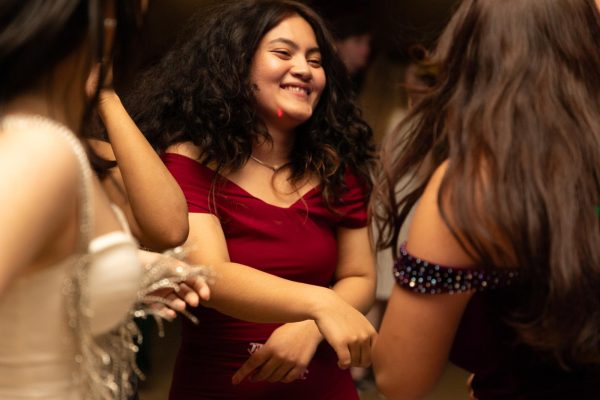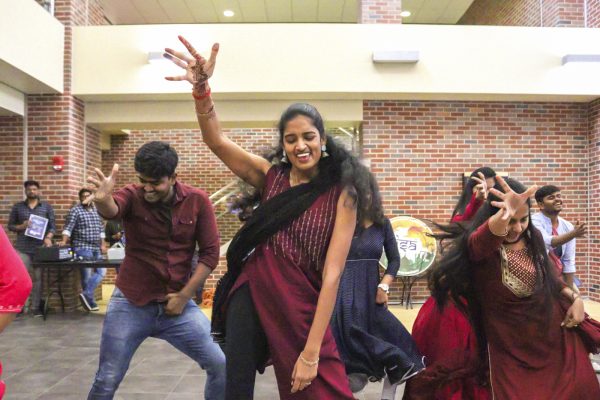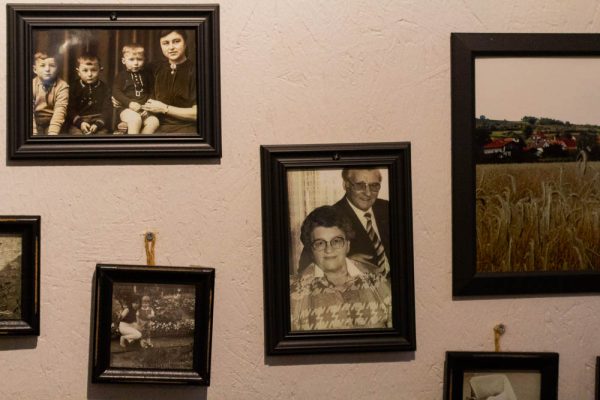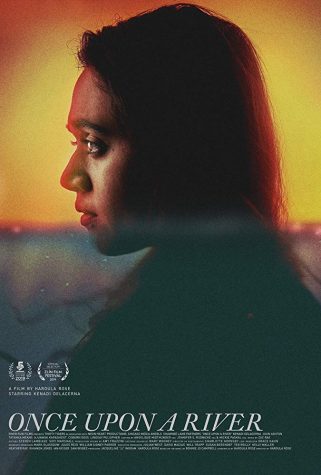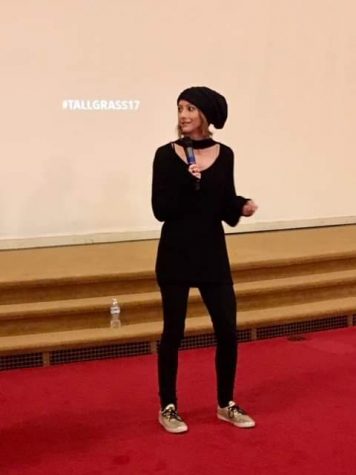Wichita Art Museum’s Georgia O’Keeffe exhibit features artifacts, fashion
The Wichita Art Museum’s spring exhibition, Georgia O’Keeffe: Art, Image, Style, is on display now. Revered for her bold, transformative paintings, O’Keeffe is equally admired for her personal aesthetic and unwavering, unapologetic sense of self.
Stanford University professor Wanda Corn, in collaboration with the Brooklyn Museum, curated the show. It is unique in its vision to present a holistic, biographical inquiry into O’Keeffe’s life and art. By all accounts, the two were impossible to separate.
In addition to her art, the show exhibits clothing and shoes from O’Keeffe’s everyday existence, media artifacts, as well as photographs and portraits of her visage by other artists. This unusual glimpse into her life gives dimension to O’Keeffe’s clear artistic voice.
Upon entrance into the exhibit, the viewer steps into another world. The second-floor foyer is decorated in cacti, rustic wooden benches, and the famous O’Keeffe cow skull — bleached and intact. The exhibit itself is hushed, dark, and eerie. The display spans from her childhood in Virginia to her early days in Brooklyn, then concludes with her later years in New Mexico.
Black and white photographs of the artist grace the walls. In fashion, she treated herself as a blank canvas for dark, abstract cloths to be draped over in interesting shapes. The eye jumps from childhood photos to physical displays of O’Keeffe’s personal, worn clothing. These run the gamut from cloaks and coats to white summer dresses.
The dress displays are particularly haunting. Reflecting the simple, unbusy aesthetic in O’Keeffe’s artwork, her dresses are simple yet bold in design. Some of the garments were hand-sewn by O’Keeffe herself, and a careful viewer might catch a crooked stitch across the bodice of a plain white frock.
Other dresses reveal more detailed, painstaking work. You can recognize her imagination and attention to organic forms in both her art and dress. The garments are worn and well used. Some even feature visible stains. You can’t help but feel physically close to the artist as you observe her clothes and shoes — items that she wore everyday under a beating New Mexican sun.
Perhaps the heartbeat of the show is public identity. The broad retrospective causes you to examine the context in which O’Keeffe rose to fame. One such piece is a LIFE magazine cover featuring the artist. The artifacts display a steadfastness of individuality and feminism within a masculine era. These aspects enrich her late-in-life celebrity status, which was unusual and fascinating in its own right.
By the end of the exhibit, the viewer is struck with the inspiring method in which O’Keeffe curated her life — the seamless way she blended her daily aesthetic with her art.
The components of this complex show allow us to further appreciate the pioneer that O’Keeffe was. Her nonconforming lifestyle was unflinchingly modern and prophetic. She was both weird and loved. From within the confines of our own era, that fact alone makes her life worthy of exploration.
The Georgia O’Keeffe exhibit runs through June 23 at the Wichita Art Museum. Admission is $10 for students and free on Saturdays.






